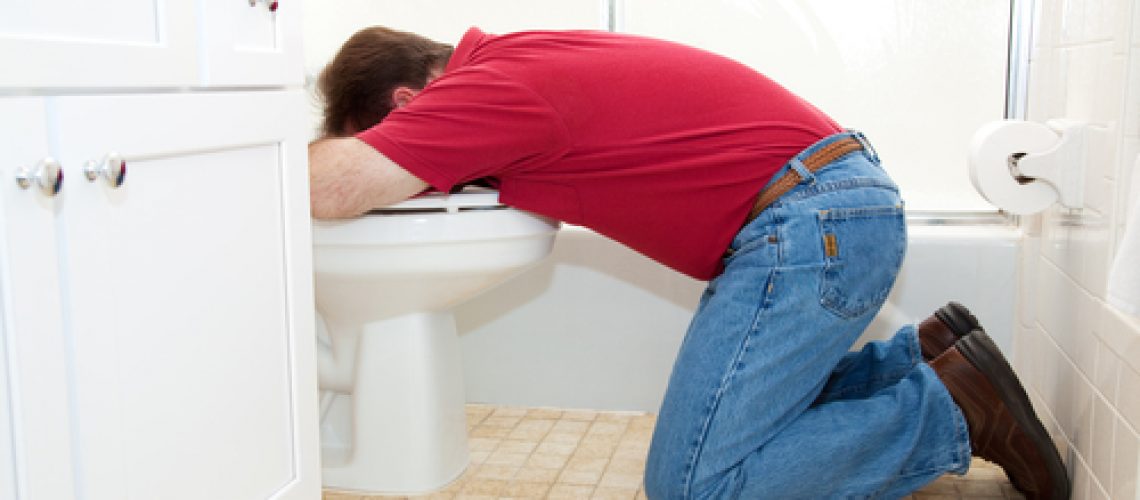Before I get started...
Personally I think this is the most common reason why people are happy to continue cutting corners with food safety. It appeared 3 times in my “Top 10 Food Safety Excuses“.
Before I start the main part of this post, I just want to say “what a really stupid justification for doing the wrong thing”.
It’s like they think it is a high school exam, and the pass mark is having no cases of food poisoning. I think a better analogy is giving someone food poisoning is like walking across the exam room and smacking someone in mouth. You don’t deserve to fail the exam, you need to be expelled.
Just saying.
Some great questions
There are a number of questions that all say pretty much the same thing:
If this is so bad, why hasn't someone already had food poisoning?
My (friend) / (relative) / (neighbour) always does x, why have they never had food poisoning?
Aren't you being a bit paranoid?
And sometimes I look at the food safety standards and think they are based on paranoia, but then I need to remind myself that even paranoid people have enemies.
But I came to a conclusion that is probably totally counter cultural when it comes to food safety circles…
It is actually very hard to give someone food poisoning!
Think about it. Your body is actually a honed killing machine, despite the extra kilos you may be carrying.
It is designed to fight invading bacteria. From the moment food enters our mouth, our bodies are actively raging war on foreign bodies. Our stomachs are chemical warfare chambers. We mass produce antibodies. We have organs dedicated to cause.
Our bodies are ready for battle!
Which means that when small skirmishes come their way, they handle it in their stride.
So point number one is that you actually have to go beyond what is normal to give someone food poisoning.
And society doesn't make it easy for you
For a restaurant, look at the quality of the products you receive. Most of them are sterile, or heat treated, or wrapped, or sprayed, or washed, or frozen, or chilled, or prepacked.
The supply chain isn’t perfect, and part of the cause can often be tracked back to an external source, but it normally takes a lot more.
We then also know which items will traditionally give us food poisoning and we then ask the restaurant to do something to eliminate the risk – cook it! That’s right, we know the secret of turning an unsafe item back into a relatively safe item (most of the time).
You need a lot of bacteria
OK, technically it depends upon which type of bacteria, the age of the person, their general health and a dozen other factors as how much bacteria is needed. Yes, there are some nasty ones that don’t require much, and there are some bacteria that the body fights off in truck loads.
My point is that you need a lot of bacteria to give someone food poisoning. To get a lot of bacteria you generally need these things:
You need a source of bacteria
There are things in the kitchen that we know are incredible sources of bacteria. Raw chicken, for example, is a great place to find nasty bacteria. Raw eggs are also like a game of Russian roulette.
The trick, quite often, is to move the bacteria from an unsafe location (e.g. a raw chicken) to a place that you think is safe (e.g. almost everywhere else in the kitchen). This is called “cross contamination” and it can be very effective.
...and time
Bacteria can multiple very quickly, but it still takes time. That’s why we have use by dates on many products.
And we can give bacteria the time it needs by doing things like preparing in bulk for the next couple of days, storing left overs, buying in bulk,
...and temperature
To make the most of time, bacteria has a preferred temperature (the “danger zone”). When it is too hot, bacteria dies. When it is too cold, it slows down. But in the danger zone bacteria have the opportunity to multiply and multiply and multiply.
That’s why leaving items unrefrigerated is a no-no. That’s why leaving leftovers out overnight is a disaster. It’s also why display cabinets, bain maries, and other areas where food is left out can be a real problem.
...and "food"
Bacteria love a moist environment. A damp cloth is paradise for bacteria. It then helps when there are food scraps, or oils, or goopy bits in it.
Which adds up to a lot of effort
To give someone food poisoning, you need to get bacteria into something, give it enough time to multiply, not kill it through cooking, and then serve it up to someone.
Which brings me onto my next post, a conversation I had with a cafe owner as to how a “clean” cloth could give someone food poisoning…
Next: How much effort? Gloves + cloth + ????
What started this series of posts was a discussion with the local cafe owner about how they used gloves, and topped off with how they used a particular cloth.
Out of that conversation I created the top 10 list of excuses, but at the core of it was the belief that what she was doing was not dangerous. In this post I laid the framework as to why they were getting away with it, and in my hypothetical situation I add one more thing to the mix to make the perfect storm.
